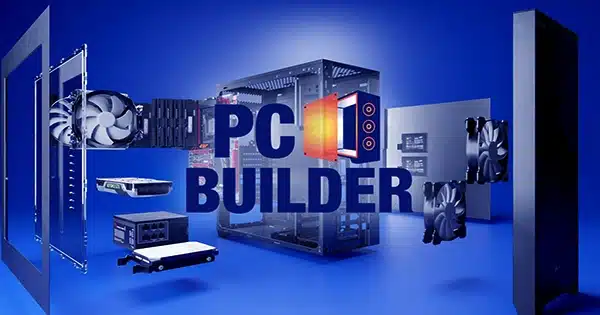The most crucial step in constructing your own PC is choosing the appropriate components, which most people do after considering their money and use case. For the benefit of our users, we keep a list of the best PC builds that offer parts recommendations for gaming PCs priced between $500 and $3,000 or more.
You can now make a components inventory for your upcoming build on Newegg using AI. The business claims that ChatGPT is the foundation of its in-beta AI PC-building helper. Our testing indicates that it needs to be improved because the recommendations it currently makes are not very effective.
For a long time, Newegg has had a PC builder(opens in new browser) where you could pick all the components you needed by category and generate a unique parts list. What’s new is a free text “Build with AI” window where you can input a simple request like “build me a PC for gaming with an RTX 3060” and it will provide you with up to three recommended configurations.
The designer, however, doesn’t appear to provide sound guidance or adhere to instructions very well. When I inquired for the “best gaming PC under $1,000,” it suggested three configurations with the most expensive coming in at $1,165.
Additionally, the $1,000 models that Newegg suggests use outdated technology. All three of the models, including the most costly, used AMD Ryzen 5000 CPUs from the previous iteration and had a slow RTX 3050 GPU. I would much rather have some seen choices that use the most recent silicon.
All of the builds suggest items that you don’t truly need, which contributes to the issue. For instance, all three of the CPUs the bot suggested—two Ryzen 5 5600Xes and a Ryzen 7 5800X3D—come with reliable air fans in the package, but these budget-conscious build guides advise using third-party coolers that cost between $29.99 and $139.99. The Ryzen 7 5800X3D components list, for example, suggests a cooler Master Hyper 212 Evo V2 air cooler, but one of the 5600X-powered versions recommends a $139 AIO cooler, which is excessive.
Power sources, motherboards, and cases are also overpriced in the component inventories. If your limit is $1,000, you don’t need an 850W power source that’s 80+ Gold certified and costs $149 when a good 600W one costs less than $70. You should also consider a sub-$100 or sub-$125 processor and a 1TB SSD rather than a 2TB SSD. Most experts would advise you to spend more money on the graphics device and CPU.
Additionally, I requested Newegg’s AI PC maker to create a “budget PC that can play games with ray tracing at 1080p” and only received one outcome that was only sort of the right configuration. It displayed a $1,221 machine with an RTX 3050 graphics card and a Core i7-12700K processor.
The majority of people are aware that the RTX 3050 is one of the weakest GPUs that can perform ray tracing (see our GPU classification). The 12700K, meanwhile, is not only a generation-old CPU but also superfluous for ray tracing. Spending less on a Core i5 and a superior graphics device would be much better for you.
It’s important to observe that the outcomes are also fairly arbitrary. With the same instruction, repeatedly pressing the Build with AI option will result in drastically different suggested designs.
However, the majority of suggested configurations do not include a monitor. The majority of people looking for advice on a PC setup would anticipate a components inventory devoid of peripherals.
Then you might also find that a crucial component is lacking. When managing editor Matt Safford requested a compact computer, a components inventory without a cover was provided.
When creating a parts inventory, continue to contact specialists and use your own discretion. As with many examples of businesses incorporating AI, it is far from perfect, though it may improve in the future.














